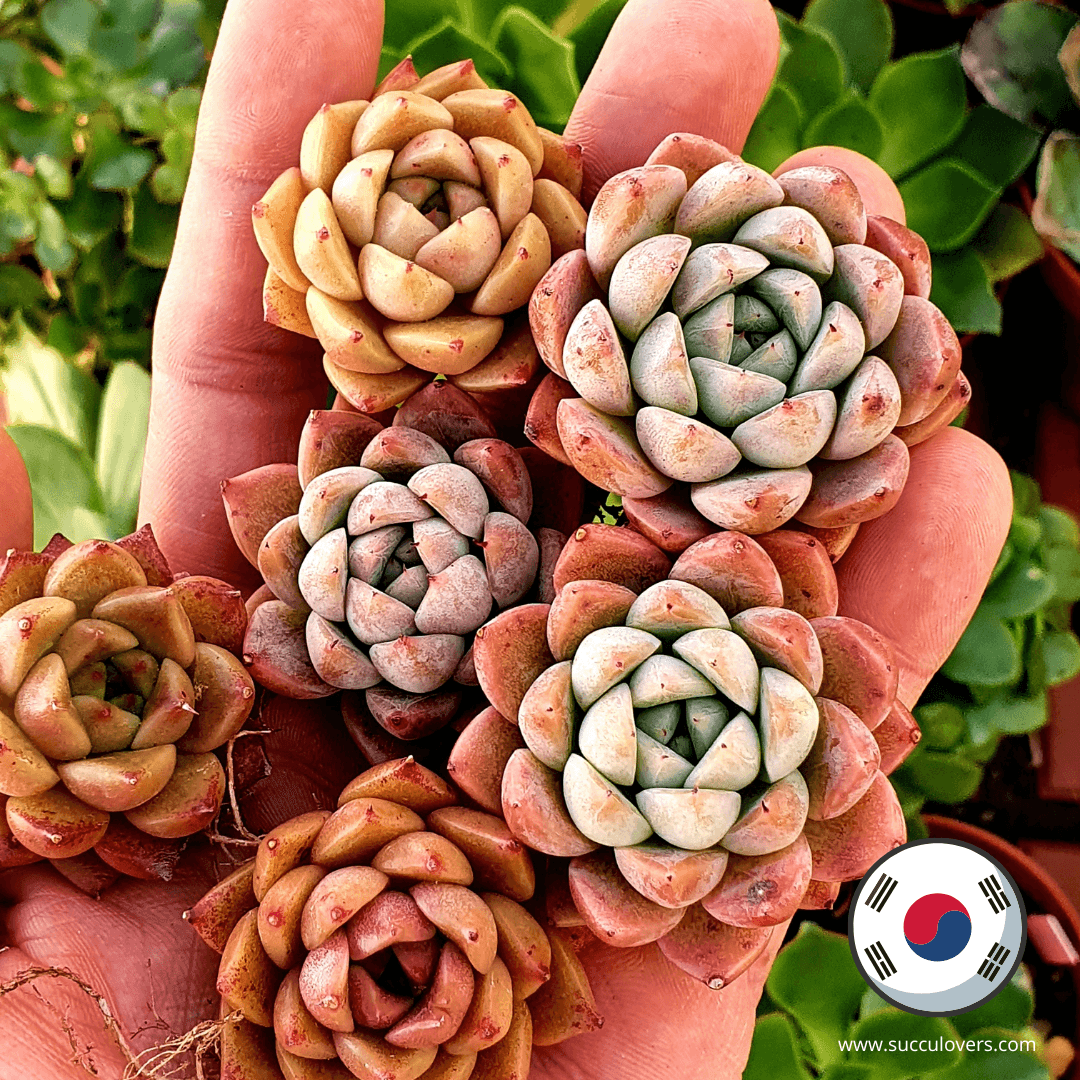
Don't get Chinese succulents for Korean succulents!
Share
Did we get your attention? The headline is somewhat general, but in this post we are going to give you our vision of the world market for succulents.
 World markets for succulent plants
World markets for succulent plants 
Within the succulent plant sector, there are large producing and consuming countries of succulent plants. Brazil, Argentina and the USA in America; China, South Korea, and Japan in Asia; Portugal, Spain, Italy and the Netherlands in Europe.
Each market has its own characteristics, tastes, quirks or favorite genres. In terms of the number of specialized companies, perhaps the largest market is South Korea: they master cultivation techniques, they have been hybridizing for years, there are dozens of wholesalers, they have the most specialized producers in the world and, without a doubt: they have the most beautiful plants! We all want Korean succulents! Being a highly evolved market, there is a lot of competition. They sell only developed, correctly identified, healthy plants and also have an endless supply of the most outstanding genera, especially echeverias. The preferred specimens on the Korean market are compact, small and colorful.
 Korean succulent plants
Korean succulent plants 
South Korea is one of the countries with the highest GDP per capita, has a high population density (it has a few million more inhabitants than Spain and occupies a surface 5 times smaller) and the cost of living is high . In order to prosper in such a developed market, it is normal for them to source raw materials from other producing countries with lower production costs. We do not have exact import data, but the vast majority of Korean succulents come from China, which is the largest succulent plant-producing country in the world.
The most famous suppliers and the most powerful wholesalers hybridize and grow their own plants, but as soon as these specimens become best-sellers, the production of this species will move to China. Here we leave as an example a list of best-selling succulent plants in Korea that are mostly produced in China:
Echeveria "Silhouette"
Echeveria "Red Velvet"
At the same time, Chinese producers seek to make their investments profitable. They minimize cultivation times and costs by using insecticides, fungicides and fertilizers to bring them to market as soon as possible, giving rise to swollen plants that will need a longer adaptation period than succulents from Korea.

 Import succulent plants to market
Import succulent plants to market 
Succulent plants in the Korean market are not excessively expensive, with average prices ranging from €4 for the most common to €20 for new specimens of the season on the market. Bringing them to Europe and marketing them is quite difficult and makes the product more expensive. In Spain, for example, among other things, you need:
- Have a company or freelancer registered
- Have an authorized plant operator number
- Being included in the "Imposeplan" program
- Have facilities approved by your autonomous community
- Have a customs agent
- Pay international express shipping
- Pay the corresponding taxes and tariffs for the entry of merchandise to the European Union (the amount is usually around 50% of the value of the product)
Furthermore, due to the fact that they are live plants, when customs processes are delayed or if transportation problems arise, the plants often do not arrive in optimal conditions and we must wait months to be able to market them.
The complexity of this whole process makes many sellers and resellers resort to the mischief of the origin of the plant and deceive the consumer, making them believe that they are buying a Korean succulent when in fact they are dealing with a national succulent or a Chinese succulent They are plants in the same way, in most cases just as beautiful. No need for deception!
 Tips for buying plants
Tips for buying plants 
- Given the costs of importing plants from Korea, be wary of a very low price if it is a “Korean succulent”.
- Compare the prices of the succulent you want to buy on the internet to assess if the origin of the plant is correct.
- Use the search engine of your browser or your Instagram to verify the authenticity of a plant, in reliable sources.
- Consult your trusted provider.
Our best recommendation is that if you like the plant, buy it! regardless of its origin. The size of the specimen, the growth rate of the genus or the novelty of the species are other factors that can also influence the price of your plant, keep them in mind 😊
.
